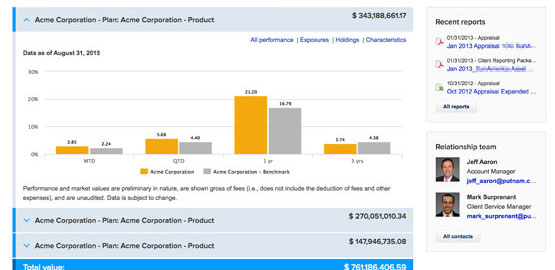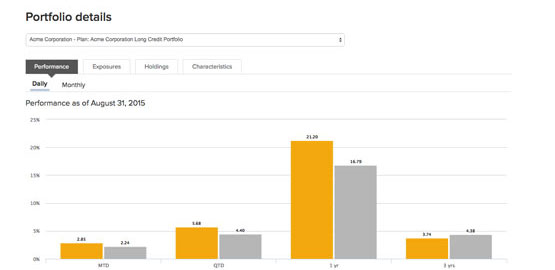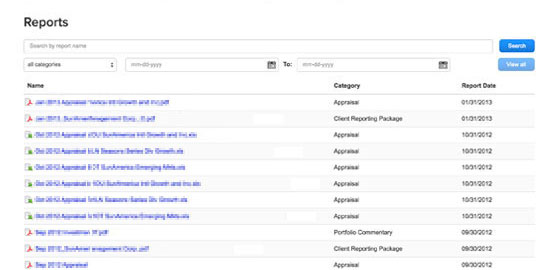Equity Insights offers research and perspectives from Putnam’s equity team on market trends and opportunities.
This month’s authors: Karan S. Sodhi, CFA, Spencer Morgan, CFA, and Donald E. Perks
When diversifying portfolios, many investors overlook international small-cap stocks. We think this is a missed opportunity. International small caps offer diversification potential and a category where active managers can shine. We are often asked by consultants and institutional investors why they should allocate to non-U.S. small-cap strategies. Conventional wisdom is that the S&P 500 Index and Russell 2000 Index have consistently outperformed their non-U.S. counterparts, and that this can continue indefinitely.
We offer a different analysis. Using two decades of data (2000–2021), we compare non-U.S. small-cap equity with three other asset classes that are common long-term allocations: U.S. small-cap equity, U.S. large-cap equity, and non-U.S. large-cap equity. We find several key attributes that favor including international small caps in portfolios today.
At the current low relative valuations, international small caps have typically subsequently outperformed
Non-U.S. small caps offer more than attractive historical long-term returns; we believe they also currently have compelling valuations relative to the other asset classes. When we look at valuations based on price-to-free cash flow, the spread between the multiples of non-U.S. small caps and U.S. large caps is in the top decile of its range over the past 21 years.
The price-to-free cash flow multiple of non-U.S. small caps versus U.S. large caps is in the top decile of attractiveness
Rolling average annual spread of free cash flow/market value between non-U.S. small cap and U.S. large cap since December 2000
Sources: Putnam, Worldscope, IDC Pricing. Footnote 1.
When spreads were at similar wide levels in the past, investing in non-U.S. small caps has led to outperformance over the following three years.
In 86% of periods (12 of 14) since 2000, when price-to-free cash flow relative valuations were at similar levels, non-U.S. small caps outperformed over the following three years
Top quintile of free cash flow/market value spreads between non-U.S. small caps and U.S. large caps since December 2000, along with annualized forward 3-year returns by asset class
Sources: Putnam, Worldscope, IDC Pricing. Footnote 2.
Average returns in three-year periods after widening of valuation gap show non-U.S. small-cap outperformance
Average forward three-year returns when non-U.S. small-cap equity was cheapest versus U.S. large-cap equity since December 2000
Sources: Putnam, Worldscope, IDC Pricing. Footnote 3.
International small-cap earnings are non-correlated with other equity asset classes
Building a well-diversified portfolio means combining investments in asset classes that have low correlation. When we make the case for non-U.S. small caps, we can take the low correlation argument a step further by looking at company earnings, not just stock performance. Non-U.S. small caps offer exposure to a different source of earnings because the companies operate in different macroeconomic environments and serve different customers. This can be seen through earnings correlations.
In our analysis of earnings correlations, non-U.S. small-cap equity industry earnings move more independently, with low levels of correlation versus all other asset classes. We believe this demonstrates “fundamental diversity” and indicates that non-U.S. small-cap equity can help to smooth out returns for portfolios that include an allocation to the asset class.
Non-U.S. small-cap equity has low earnings correlations between industry groups across select markets
Earnings correlations of GICS industry groups in non-U.S. small-cap equity versus U.S. large-cap equity, December 31, 2000, to March 31, 2022
Sources: IDC, Putnam. Footnote 4.
Their inefficient universe can help active managers outperform indexes
At a recent annual meeting, Charlie Munger, Vice Chair of Berkshire Hathaway, offered advice to a group of investors: “The first rule of fishing is to fish where the fish are. Some places have lots of fish, and you don’t have to be a good fisherman to do pretty well. Other places are so heavily fished that no matter how good a fisherman you are, you aren’t going to do very well.”
We believe non-U.S. small cap offers one of the best ponds for active managers to fish in.
We believe non-U.S. small cap offers one of the best ponds for active managers to fish in. It is an inefficient universe, with a median of three sell-side analysts covering each stock, compared with 20 analysts covering U.S. large caps. At the same time, it has a wider variety of opportunities and regions, with thousands more stocks than the S&P 500 Index or the Russell 1000 Index.
Their return dispersion can lead to more opportunities
Return dispersion is an important metric for active managers. It measures the performance variability of stocks within an asset class. In comparing the four asset classes, non-U.S. small-cap equity displays the highest return dispersion in 15 of 21 years observed. This means it offers more potential opportunities for outperformance to active managers skilled in security selection.
Non-U.S. small-cap equity had highest return dispersion in 15 of the past 21 years
Forward one-year return dispersion by asset class, December 31, 2000, to March 31, 2022
Sources: Putnam, Bloomberg. Footnote 5.
In summary, valuation spreads for non-U.S. small-cap stocks are currently in the cheapest decile relative to history, which we believe improves the odds of compelling prospective returns for investments made today. Also, non-U.S. small-cap equity offers the potential for diversification benefits, higher return dispersions, and a large and inefficient universe. We believe these characteristics improve the potential for outperformance on the part of fundamental active managers.
For more detailed analysis, download our research paper A case for active non-U.S. small-cap equity.
Footnote 1:
Data from December 31, 2000, through March 31, 2022. Non-U.S. small cap is represented by the S&P Developed ex-U.S. Small Cap Index; U.S. large cap is represented by the S&P 500. Valuation aggregates are winsorized, size-weighted harmonic means. Total returns are in U.S. dollars, annualized over three years to represent a buy-and-hold strategy.Footnote 2:
Data from December 31, 2000, through March 31, 2022. Top quintile of quarterly periods (14) when the spread between non-U.S. small cap and U.S. large cap is widest. Spread is defined as free cash flow/market value of non-U.S. small cap minus U.S. large cap. Returns are annualized forward three-year buy and hold, total returns in U.S. dollars. Non-U.S. small cap is represented by the S&P Developed ex-U.S. Small Cap Index; U.S. small cap is represented by the Russell 2000 Index; Non-U.S. large cap is represented by the MSCI EAFE Index; and U.S. large cap is represented by the S&P 500 Index. Valuation aggregates are winsorized, size-weighted harmonic means.Footnote 3:
Data from December 31, 2000, through March 31, 2022. Top quintile of quarterly periods (14) when the spread between non-U.S. small cap and U.S. large cap is widest. Spread is defined as free cash flow/market value of non-U.S. small cap minus U.S. large cap. Returns are annualized forward three-year buy and hold, total returns in U.S. dollars. Non-U.S. small cap is represented by the S&P Developed ex-U.S. Small Cap Index; U.S. small cap is represented by the Russell 2000 Index; Non-U.S. large cap is represented by the MSCI EAFE Index; and U.S. large cap is represented by the S&P 500. Valuation aggregates are winsorized, size-weighted harmonic means.Footnote 4:
Data from December 31, 2000, through March 31, 2022. The average pairwise earnings correlations between each pair of asset classes is calculated using the aggregate reported fiscal earnings within each GICS industry group each month for the past 21 years for each of the four asset classes. The Global Industry Classification Standard (GICS) is a system for categorizing every public company by economic sector and industry group developed by MSCI and S&P Dow Jones Indices.Footnote 5:
Data from December 31, 2000, through March 31, 2022. Annual return dispersion of all of the index names at the start of each calendar year. Dispersion is defined as standard deviation of the total return in U.S. dollars. Non-U.S. small cap is represented by the S&P Developed ex-U.S. Small Cap Index; U.S. small cap is represented by the Russell 2000 Index; non-U.S. large cap is represented by the MSCI EAFE Index; and U.S. large cap is represented by the S&P 500.
Past performance is not a guarantee of future results. Indexes are not managed and do not incur expenses. You cannot invest directly in an index. Diversification does not assure a profit or protect against loss.
330873
This material represents an assessment of the market environment at a specific time and is not intended to be a forecast of future events or a guarantee of future results. This information should not be relied upon as research or investment advice regarding any strategy or security in particular. Any mention of specific securities is intended to help illustrate Putnam’s research process and should not be considered a recommendation or solicitation to purchase or sell the securities. Potential market trends and opportunities were selected without regard to whether such trends and opportunities, or relevant securities, were profitable and are intended to help illustrate our investment and research process. It should not be assumed that any investment in these securities was, or will prove to be, profitable, or that the investment decisions we make in the future will be profitable or equal to the investment performance of securities referenced herein. There is no assurance that any securities referenced herein are currently held in a Putnam portfolio or that securities sold have not been repurchased. The securities mentioned are not necessarily held by Putnam for all client portfolios.
This material is prepared for use by institutional investors and investment professionals and is provided for limited purposes. This material is a general communication being provided for informational and educational purposes only. It is not designed to be investment advice or a recommendation of any specific investment product, strategy, or decision, and is not intended to suggest taking or refraining from any course of action. The opinions expressed in this material represent the current, good-faith views of the author(s) at the time of publication. The views are provided for informational purposes only and are subject to change. This material does not take into account any investor’s particular investment objectives, strategies, tax status, or investment horizon. Investors should consult a financial advisor for advice suited to their individual financial needs. Putnam Investments cannot guarantee the accuracy or completeness of any statements or data contained in the material. Predictions, opinions, and other information contained in this material are subject to change. Any forward-looking statements speak only as of the date they are made, and Putnam assumes no duty to update them. Forward-looking statements are subject to numerous assumptions, risks, and uncertainties. Actual results could differ materially from those anticipated. Past performance is not a guarantee of future results. As with any investment, there is a potential for profit as well as the possibility of loss.
This material or any portion hereof may not be reprinted, sold, or redistributed in whole or in part without the express written consent of Putnam Investments. The information provided relates to Putnam Investments and its affiliates, which include The Putnam Advisory Company, LLC and Putnam Investments Limited®.
















